
A Look at Surge Protection & Preparing Your Home for Oklahoma’s Extreme Weather
Oklahoma's ever-changing weather conditions, from hail and rain to thunderstorms and tornadoes, can wreak havoc on your home's HVAC and electrical systems. As a resident of Oklahoma, it's crucial to understand how to protect your home and take action if damage occurs.
This guide sheds light on home surge protection and other essential measures for safeguarding your electronics and HVAC systems from the impact of extreme weather. Dive into the world of whole house surge protectors and gain valuable insights to ensure a secure and comfortable living environment when nature's fury is unleashed.
The Most Dangerous Weather for Your Home’s Electrical System & Appliances
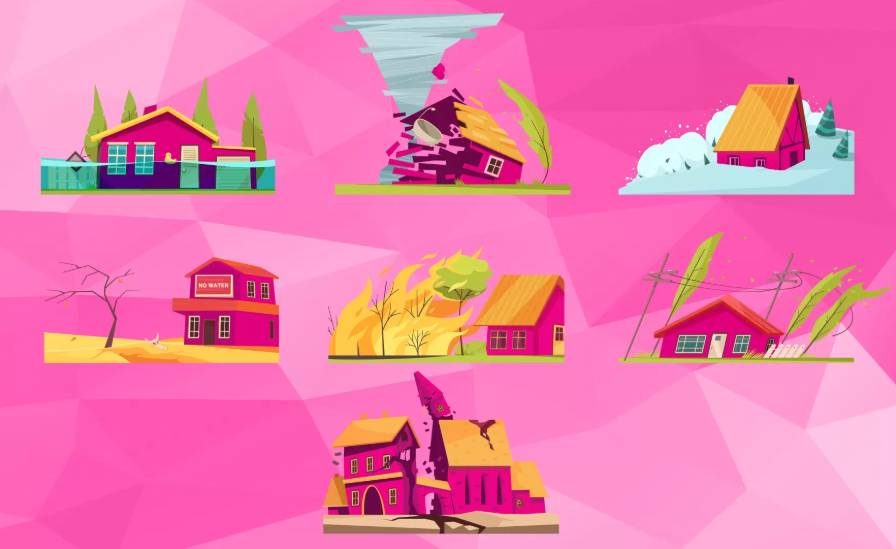
Oklahoma's extreme weather, including floods, tornadoes, and hailstorms, can take a toll on your home's electrical systems and appliances. Ensure protection and longevity by staying vigilant and prepared. Here are some weather conditions that can affect your home’s electrical and HVAC systems:
- Floods: Rising water levels can short-circuit electrical systems, damage wiring, and even cause electrocution. In the case of a flood, home surge protectors can help reduce damage and keep your family safe.
- Tornadoes: High winds and debris from tornadoes can damage power lines, resulting in power surges and electrical fires. Whole home surge protectors can help safeguard your electrical system against voltage spikes during a tornado.
- Winter weather: Icy conditions, snow, and extreme cold can lead to power outages and electrical component damage.
- Wildfires: These natural disasters can damage power infrastructure, causing power surges that are best protected by a home surge protector.
- Drought: Prolonged dry spells increase wildfire risks, which can result in electrical damage. Though surge protectors for homes can defend against voltage spikes, they cannot shield against drought effects.
- Wind & Hail: Strong gusts and hail storms can damage power lines, leading to power surges and electrical fires.
- Earthquakes: Seismic activity can compromise power infrastructure, causing power outages and surges. A whole house surge protector is the best way to defend your home against voltage spikes during an earthquake.
What Is a Power Surge?
A power surge, also known as a transient, is a brief voltage spike in an electrical circuit. These spikes last for mere microseconds but can reach amplitudes of tens of thousands of volts. While electronic equipment is designed to handle minor voltage variations, power surges can damage, degrade, or even destroy the electronics and appliances in a home, commercial building, or industrial facility.
These sudden increases in electricity can happen in either a positive or negative direction. They can also either add to or subtract from the normal flow of electricity, and they often oscillate or fluctuate before gradually returning to normal. It's vital to protect your electronics from these surges and the damage they can cause.
Why Are Power Surges a Threat to Your Home?
Power surges pose a significant threat to your home's electronics and appliances. Although most US wall outlets operate on a 120-volt system, an alternating electrical current fluctuates between 0 and 169 volts. The majority of electronics and appliances cannot handle voltage above 169 volts, so when a power surge occurs, an electrical arc generates heat that damages components and circuit boards.
While small surges may not cause immediate noticeable damage, these fluctuations gradually shorten the lives of your devices. Over time, the cumulative effect of power surges can cause your electronics and appliances to fail unexpectedly.
What To Do If Your AC Is Damaged During a Thunderstorm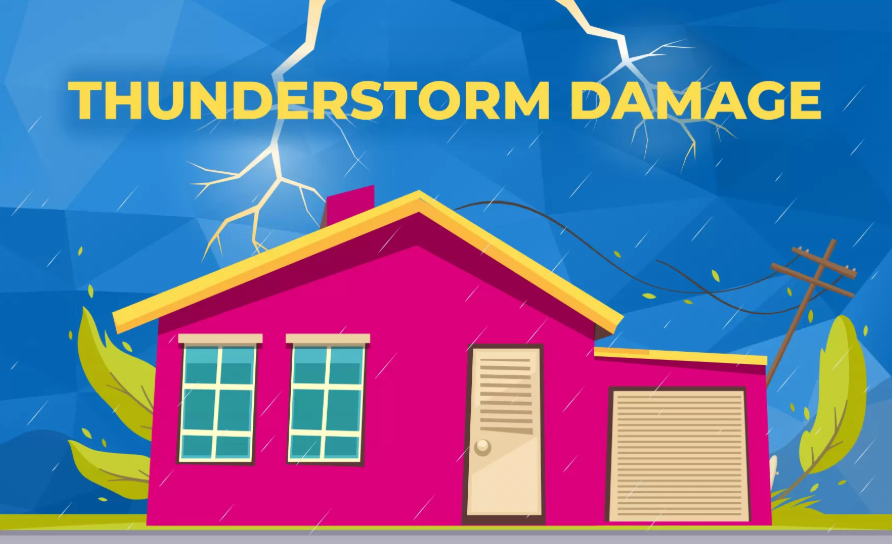
If your air conditioner is damaged during a thunderstorm, there are a few signs to look for that will help you identify the problem. Here's what you can do if you suspect your AC unit has been damaged:
- AC won't turn on: Check if a circuit breaker has tripped and needs to be reset. If your air conditioner still doesn't turn on after this, consider calling a professional.
- Low output: If the cooling capacity has decreased, it may be due to refrigerant leaks or motor damage, which needs to be repaired by an HVAC technician.
- Unusual noises or smells: Turn off the system and inspect the outdoor unit for any debris. If you notice burnt smells or can't remove debris yourself, contact a professional.
- Water pooling around the outdoor unit: Turn off your air conditioner to prevent short circuits. If flooding is expected, cover the outdoor unit with a weather-proof tarp.
- Signs of physical damage: If the outdoor unit has visible damage, call a professional to have your air conditioner inspected and repaired.
In all cases, it's best to consult with a professional HVAC technician to diagnose and repair any damage caused to your air conditioner during a storm. Remember to take preventive measures, such as using surge protectors and weatherproof covers, to protect your AC from future storms.
How To Protect Your Air Conditioner During a Heat Wave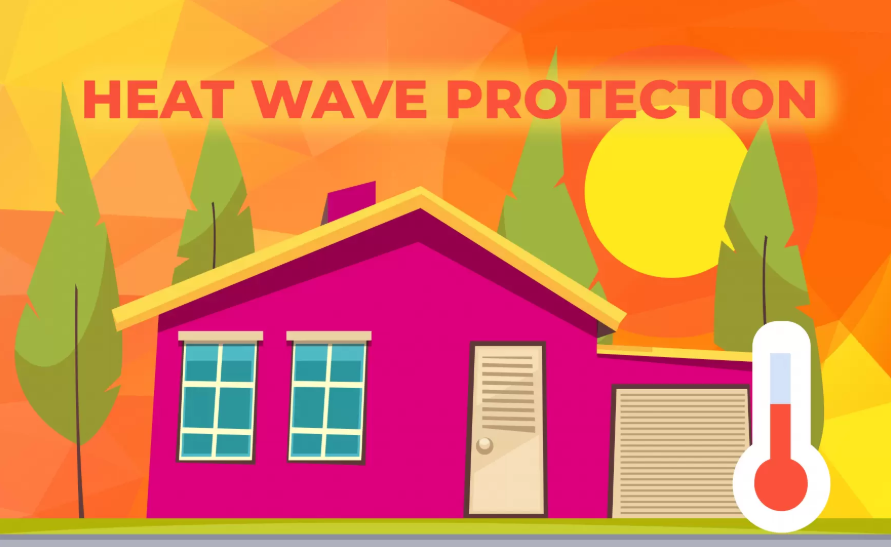
During a heat wave, it's crucial to protect your air conditioner to ensure that it runs safely and efficiently. Start by keeping the condenser coil clean to promote better circulation. Set your air conditioner to a comfortable temperature, avoiding extremes that can add excessive moisture to the air. You should also position your AC unit out of direct sunlight and draw shades or curtains to minimize heat infiltration.
Finally, regularly clean or replace filters, coils, and vents according to your unit's manual. You can also supplement your central AC with portable or room units for added comfort.
Should You Turn Off Your Air Conditioner During a Thunderstorm?
To protect it from potential damage, it's generally recommended to turn off your air conditioner during a storm. In Oklahoma, extreme weather such as thunderstorms not only causes heat and humidity but can also increase the risk of your air conditioner being hit by lightning. Running your AC during a storm can put both your HVAC system and your safety at risk.
Although home surge protectors offer some protection, they may not be able to handle the large electrical surge from a lightning strike. Overall, it's best to turn off your air conditioner during a thunderstorm to minimize the possibility of HVAC lightning damage.
Should You Run A Window AC Unit During a Thunderstorm?
The risk of damage is not limited to whole-home HVAC systems; window air conditioners are similarly vulnerable during extreme weather events. Operating a window air conditioner during a thunderstorm is not advisable, as it can expose the unit to potential damage from lightning strikes and power surges.
To protect your window air conditioner, it's best to turn it off and disconnect it from the power source during a thunderstorm. Window AC units contain sensitive electrical circuitry that can be severely damaged, and if your air conditioner is hit by lightning, it can also be a safety risk.
Protect Your HVAC Systems from Lightning Damage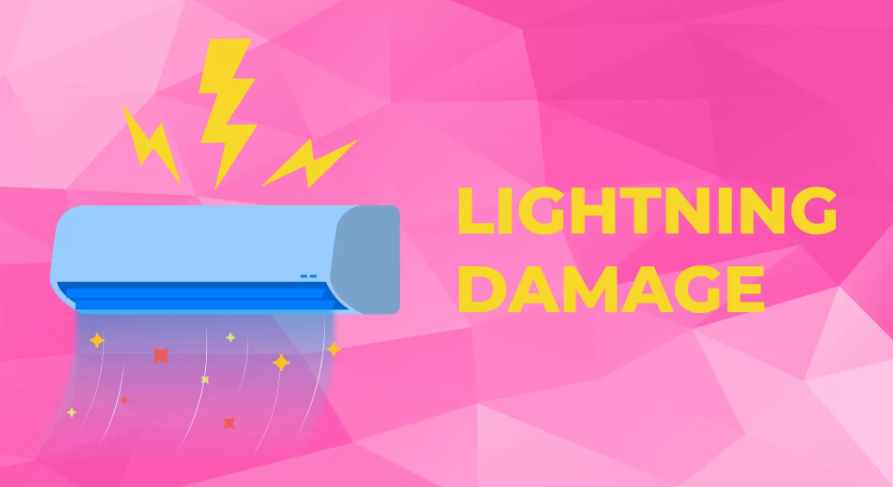
Protecting your HVAC systems from lightning damage is essential, as the outdoor components are vulnerable to direct strikes and indoor units can suffer damage caused by a power surge. To minimize the risk, there are a few steps you can take to protect your home:
- Install whole home surge protectors: A whole home surge protector can help minimize damage to your HVAC units and other appliances.
- Check the grounding system: Ensure proper grounding and search for signs of wear, corrosion, or loose wiring.
- Inspect cable connections: Make sure cables throughout your property are surge-resistant to prevent surges from spreading.
- Schedule annual inspections: Regular electrical inspections, especially before stormy seasons, can help prevent lightning damage and maintain your HVAC system's longevity.
Do Surge Protectors Protect Against Lightning?
Whole home surge protectors provide a level of protection against voltage spikes and surges, but they may not be fully effective against the immense current from a nearby lightning strike. The enormous burst of current from a lightning strike is simply too powerful for the small electronic devices found within standard power strips.
The most effective way to ensure complete protection from lightning-induced electrical surges is to unplug your devices during extreme weather events like thunderstorms.
What Happens if Lightning Strikes an Air Conditioner?
If your air conditioner is hit by lightning, it can cause severe damage to the unit and potentially render it unusable. A lightning strike can melt the plug, damage sensitive electrical circuitry within the control panel, and necessitate extensive repairs or even a complete replacement of the unit.
The effects of lightning damage may be immediately noticeable, impacting the performance of your air conditioner right away. Alternatively, the damage could be less severe but gradually worsen over time, making it difficult to assess the true extent of the damage until months after the incident. It is crucial to take precautions, such as turning off your air conditioner during thunderstorms, to minimize the risk of lightning-related damage.
The Importance of Surge Protection for AC Units
A surge protector for your AC unit is crucial for maintaining the longevity and efficiency of your system. When excess electricity flows into your home's electrical system, a surge protector reroutes the current away from the HVAC unit and into the grounding wire, ensuring the unit receives only the correct voltage.
In cases of extreme power surges, such as those caused by lightning storms, the surge protector sacrifices itself to protect the HVAC system. By preserving the sensitive electrical components within the unit, surge protectors extend the system's lifespan and help maintain its efficiency. This will ultimately save you money on repairs or replacements, as well as energy bills.
Can a Power Outage Damage an AC unit?
A power outage can indeed cause damage to an AC unit, especially if it's running when an outage occurs. The sudden shutdown can impact multiple components within your HVAC system.
Air conditioners rely on a capacitor to start the compressor, which is a crucial part of the cooling process. Power outage surges have the potential to cause the capacitor to fail. If this happens, the compressor will not restart once power is restored. To minimize the risk of damage to your air conditioner during power outages, it's essential to use surge protectors for homes and take other precautionary measures to protect your HVAC system.
Why Electrical Protection is The Right Move for Your Home’s Safety
Electrical protection is a critical step in ensuring your home's safety and preventing potential hazards. Implementing a whole home surge protector safeguards your property from electrical faults that could result in devastating consequences, such as fires or damage to your appliances. In cases of storms or floods causing damage to your property, switchboard, wiring, equipment, or appliances, a licensed electrician must perform verification tests before reconnection to guarantee the electrical circuits are functioning correctly.
By investing in electrical protection measures, you not only secure the safety of your home and family but also maintain the integrity of your electrical system and appliances, ultimately ensuring peace of mind.
What Are Surge Protective Devices?
Surge Protective Devices, also known as SPDs, are important tools that help protect electrical systems and equipment from dangerous surges. These surges can happen both outside, like during a lightning storm, and inside, like when an electrical load is switched on or off. SPDs work by limiting the amount of extra voltage that can flow through a system during a surge and by directing any extra electrical current away from sensitive equipment.
It's important to note that most surges actually happen internally and can come from a variety of sources, like turning on an appliance or using an office machine. A home surge protector can protect against internal sources of surges by limiting the amount of extra voltage that can flow through your electrical system during a surge.
How Do Surge Protective Devices Work to Protect Your Home?
Surge Protective Devices (SPDs) work by changing between two different states, depending on the electrical conditions. When everything is working normally and the voltage is stable, the SPD doesn't do anything and stays in a "sleeping" state. But when there's a sudden surge in voltage, the SPD wakes up and switches to an "active" state.
In an active state, it diverts the extra electrical current away from your appliances and electronics and sends it back to the power source or to the ground. This helps to prevent damage to your devices by lowering the voltage to a safe level.
Once the surge has passed, the SPD goes back to sleeping mode until it's needed again. This process ensures that your home's electrical system and devices are protected from sudden voltage spikes, which can help keep your equipment safe and working properly for a long time.
What Does a Surge Protector Do?
A surge protector works by limiting the amount of extra voltage that can flow through your electrical system during a surge. It does this by diverting the extra electrical current away from your appliances and electronics and sending it to the ground or back to the power source. This helps to prevent damage to your devices by lowering the voltage to a safe level.
By using a surge protector, you can help ensure that your HVAC systems and electronic devices are protected from these sudden voltage spikes, which can help them last longer and work more reliably.
What Is a Surge Protector?
A surge protector, sometimes referred to as a surge suppressor, is a device designed to safeguard electronic equipment from harmful power surges or voltage spikes.
There are two main types of surge protectors: whole house surge protectors and strip surge protectors. A whole house surge protector is installed at the main electrical panel and provides protection for the entire house, including large appliances. A strip surge protector is a plug-in device that provides protection for a limited number of electronic devices plugged into it.
Can You Plug a Surge Protector Into Another Surge Protector?
Connecting one surge protector to another, also called "daisy-chaining," is not a good idea. Even though it may seem like it would provide extra protection, it doesn't actually increase the ability to handle power surges. Instead, it can lead to an overload, causing the surge protectors to fail and potentially damaging your devices or causing fires.
Connecting surge protectors in this way can also cancel out their protective features, and it may even void warranties or insurance coverage. To keep your electronics safe, it's best to use surge protectors properly and not connect them to each other.
The Differences Between Point of Use and Whole House Surge Protectors: Which is Right for You?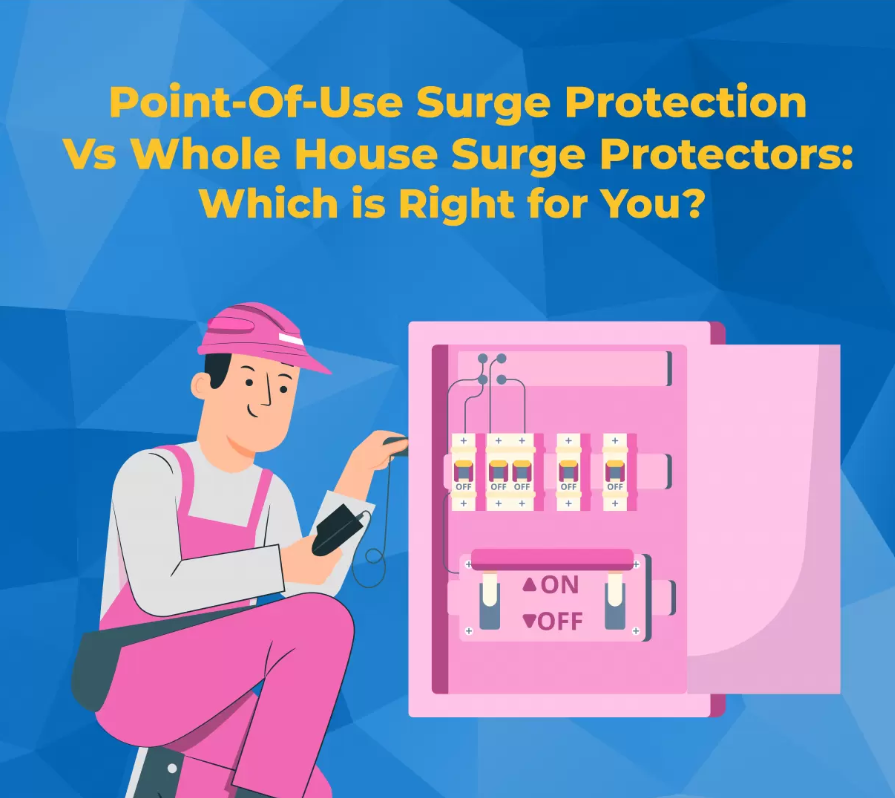
When it comes to safeguarding your home's electrical system and devices from power surges, choosing the appropriate type of surge protection is crucial. The two main options are whole house surge protectors and point of use surge protectors.
Understanding the differences between them, as well as their pros and cons, can help you make an informed decision based on your specific needs and ensure electrical and HVAC surge protection for your home.
Pros and Cons of Point of Use Surge Protectors
Point of use surge protectors are individual devices that plug directly into wall outlets to protect specific appliances or electronics. They offer an affordable and portable solution for safeguarding your valuable devices against spikes of electricity.
However, unlike whole house surge protectors, point of use surge protectors can only protect the devices they're directly connected to. They also do not have the capacity to handle larger surges that can occur during severe weather events or power grid issues.
Pros and Cons of Whole Home Surge Protectors
Whole home surge protectors are installed at the main electrical panel and protect the entire electrical system in your home. They can handle larger surges and provide comprehensive protection for all connected devices, including those that can't be directly connected to a point of use surge protector.
Although whole home surge protectors have a higher upfront cost and require professional installation, they offer long-term protection for your entire home, extending the lifespan of your HVAC system and ensuring electrical safety.
Choosing the Right Surge Protector for Your Home
Ultimately, the choice between point of use or whole house surge protectors depends on your specific needs and priorities. If you're looking for an affordable solution to protect individual devices, point of use surge protectors may be the right choice. However, if you want comprehensive surge protection for your entire home, investing in a whole house surge protector is a wise decision.
You may also consider combining both types of protection for added security, using a whole house surge protector for overall protection and point of use surge protectors for high-value electronics or sensitive equipment.
How Much Surge Protection Do I Need?
When choosing a home surge protector, it's essential to consider the level of protection required for your specific electronics. Surge protectors are rated in joules and range anywhere from 200 joules up to over 2000 joules. Here are some recommendations:
- 600 - 1000 joules: A rating of 600 joules is a good starting point for smaller devices like kitchen appliances, lamps, and clocks.
- 1000 - 2000 joules: For electronics like power tools, office equipment, printers, and routers, surge protectors rated between 1000 and 2000 joules are recommended.
- 2000+ joules: For more sensitive equipment like home theater components, gaming consoles, and computers storing important data, consider surge protectors with the highest joule ratings of 2000 and above to ensure optimal protection.
Final Tips for Keeping Your Home Safe During Extreme Weather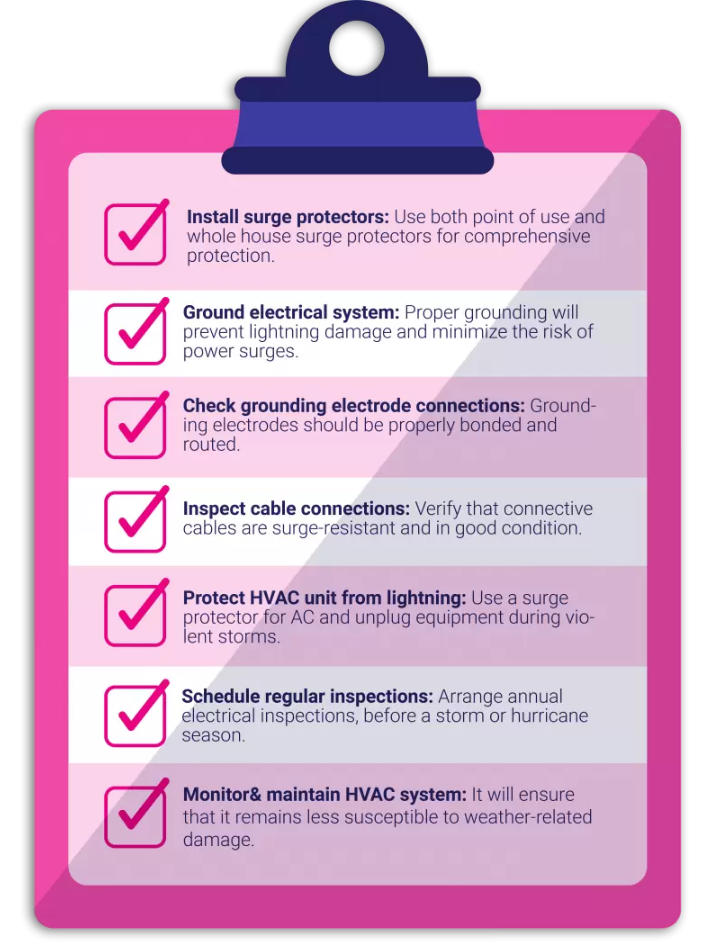
As you’ve learned, protecting your home's electrical and HVAC systems from harsh weather conditions is essential for maintaining safety, efficiency, and longevity. By implementing the following safety measurements, you can prepare your home and protect your valuable systems from potential damage caused by power surges, lightning, and other weather-related events.
By following this checklist, you can effectively shield your home's electrical and HVAC systems from the adverse effects of harsh weather conditions, ensuring safety, efficiency, and reliability for years to come.